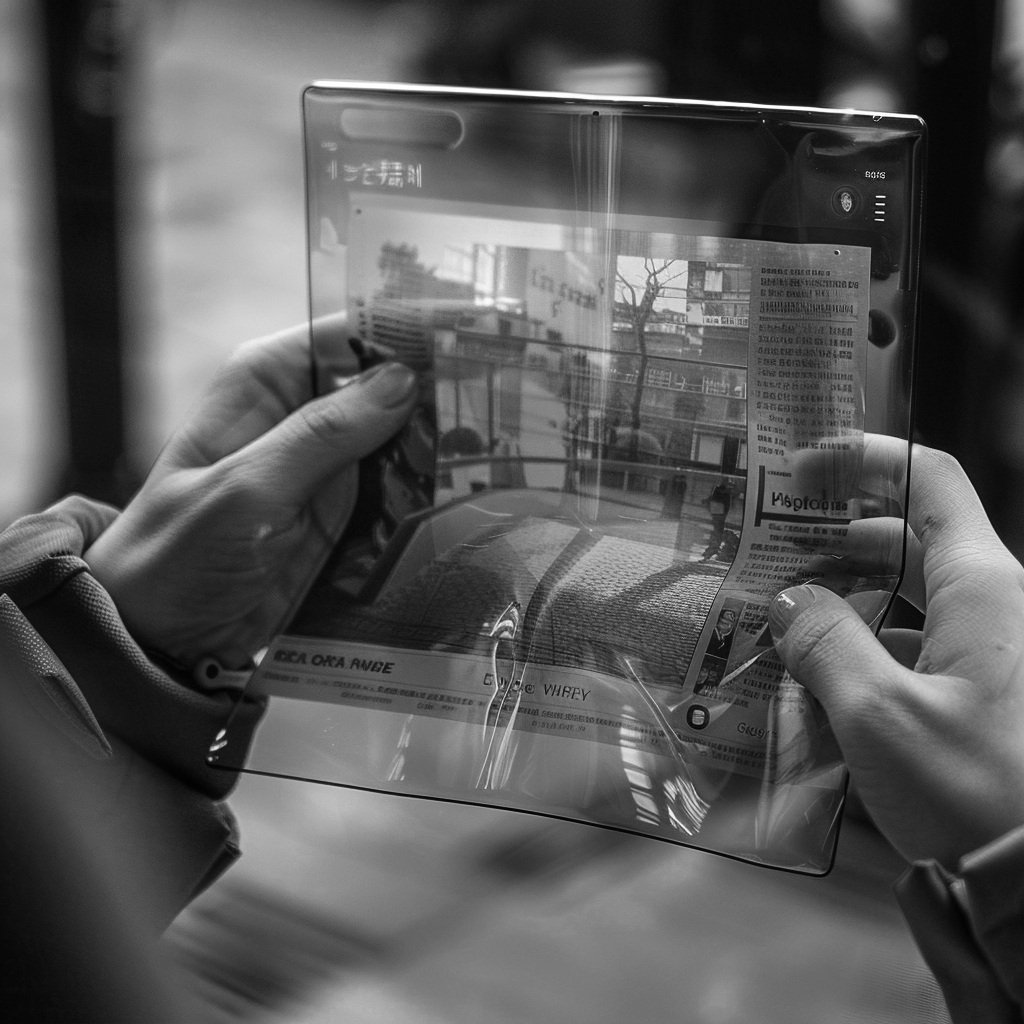Imagining Journalism’s AI Futures
April 5, 2024
If we want to predict what might happen tomorrow, there are a fairly narrow range of possibilities of the things that might happen: Israel may strike another aid convoy in Gaza. Rishi Sunak might dodge a question about when he will call an election. Brighton and Crystal Palace could upset the Premier League frontrunners.
But if we wanted to predict what might happen a month from now, the number of potential future scenarios increases greatly: Israel and Hamas may have agreed a ceasefire. Rishi Sunak might have called a May election. Manchester City could be about to claim their fourth Premier League title in a row. But our ability to attach any probabilities to those things decreases, because there are many other equally plausible scenarios that could play out.
As you look further and further into the future, the number of potential scenarios increases exponentially and the degree of certainty with which you can predict any one scenario decreases exponentially. This concept has been well established and harnessed by the excellent Future Today Institute and others, who have ample resources about how to use time cones (a visual representation of the expansion of possible future scenarios) as a tool for developing strategies.
Why then, might we want to think about what the world might look like in 17 years? I would argue it is not to test our predictive capacities, but rather to push our imaginative capabilities. If we shy away from looking into the future - even at the relatively shallow level of 17 years - for fear of being wrong, then we limit our ability to play a proactive role in shaping that future.
“…in 2001 I led a meeting with some U.S. newspaper executives to forecast the future of the news business. They, too, had already settled on a target year: 2005. This was an industry with visible disruption looming from the tech sector, where the pace of change was staggeringly fast. I already knew the cognitive bias in play (their desired year ended in a five). But I didn’t anticipate the reluctance to plan beyond four years, which to the executives felt like the far future. I was concerned that any strategies we developed to confront future risk and find new opportunities would be only tactical in nature. Tactical actions without a vision of the longer-term future would result in less control over how the whole media ecosystem evolved.” Amy Webb, HBR
While we as journalists are often ruthlessly focused on what is happening now (daily news) or what happened in the recent past (investigations) there are powerful forces gazing deep into the future and starting to try and shape society now in ways that can introduce that bright new future for their business, industry or political movement.
In August 2016, I sat in a lecture hall in Riga listening to a keynote speech by Russian-American journalist Masha Gessen. Their speech was searing and challenging of the journalistic establishment they were witnessing in the US: journalism at the time lacked the basic imagination to consider that Donald Trump may win the Presidential election. And that lack of imagination had consequences for how news media was covering the campaigns and the elections: journalism was vastly underestimating the risk that Trump might actually win or what that might mean for democracy, and coverage was naive, credulous and free-flowing. A lack of imagination, they argued, was undermining our work. I would extend that argument further: A lack of imagination could undermine our entire industry.
17 years ago, the iPhone was launched as the world’s first touchscreen smartphone. In journalism, it still feels like we are reckoning with that singular development, in addition to the myriad developments which flowed from it. Maybe we simply did not take the time to look ahead 17 years and imagine what more than half the world’s population owning a smartphone might mean for our industry.
So now, let us glance 17 years into the future and consider the consequences of another milestone technological advance: Artificial Intelligence. As we do, know that this is not a prediction, something that I think will happen, or necessarily something I want to happen, but rather an thought experiment of a plausible possible future that may unfold in part or in its entirety. The utility of the exercise is not in the accuracy as a prediction, but rather in whether it pushes us as a global journalism community to think more deeply about our craft, our utility, and our audiences.
June, 2041
Societies around the world are reeling from the effects of extreme weather supercharged by a heating planet. Tens of millions of climate refugees have received an uneasy welcome in countries less impacted by the climate crisis. There’s widespread unrest at the precipitous income inequality that has disrupted social cohesion. Jared Kushner has just been re-elected for a second term as US President, as the Trump family stranglehold on US politics enters it’s fourth decade. There are more newsworthy stories to be told than ever before.
At the launch of the 2041 Digital News Report, Reuters Institute Director Rasmus Kleis Nielsen presents the top level findings from this year’s survey of audiences around the world:
Across markets, only around 5% of respondents prefer to start their news journeys with a website or app. Linear TV is reaching the end of a sharp decline, with streaming services having overtaken linear for news use in 2030. Across all regions, interest in AI holds steady after its peak in 2030. The ongoing climate crisis, and the resulting impacts on politics, conflict, agriculture and business are the main drivers of audience interest.
In the US, Europe and South East Asia, multi-service AI platforms by companies such as OpenAI, Claude, Google and Microsoft for news use has grown for the tenth year running, with 50% of respondents using these platforms for daily news. Since the mid-2020s these companies have signed deals with the world’s largest news companies and have built strong offerings for news that are bundled with relatively high-cost monthly subscriptions. Bundles offer a range of functionality: scheduling appointments, responding to emails and messages, generating personalized music, creating and booking travel itineraries, creating bespoke recipes, providing companionship etc.
The news products are built on robust and accurate journalism, and are increasingly popular due to the high degree of personalisation provided both in terms of story selection and in how the story is presented to each consumer as individuals. Social science researchers are starting to find strong evidence that this high degree of personalisation in news and information is contributing to increasingly polarised societies.
The market trend of consolidation continues: in the early-2030s larger newsrooms flush with AI-platform profits acquired small and medium-sized newsrooms who had seen profits fall away precipitously.
In Africa, Latin America and South Asia, social media remains the dominant means of accessing news. Trust and interest in news has plummeted, as audiences are bombarded with low quality AI-generated content that frequently seems to be manipulated by political movements and corporations.
While in the US, Europe and Southeast Asia audiences could turn to the new AI giants as a more reliable and engaging source of news, these models are still in their infancy in the Global Majority and their usage costs are inhibitive to many. Social science researchers have well documented the impact of widespread AI-generated disinformation as a leading driver of social polarisation in the Global Majority.
For the second year running, across all regions, print has been the fastest growing source of news. New entrants, emphasising values of “human curation, human editing, human creation, local connection” are increasingly popular with audiences who cannot afford expensive AI bundles, or who are exhausted by the increasingly noisy and manipulated social media platforms. Overall usage is still small (5%) but is growing rapidly. Print newsrooms primarily generate revenues through low-cost subscriptions, supported by advertisements from local businesses keen to cut through the noise online. Newspapers run weekly in-person discussion groups as a forum for sharing opinions and asking questions about the week’s stories.
As Professor Nielsen concludes his remarks, he opens the floor to questions. Gesturing to a screen, NewsGPT in a soft and very nearly human voice asks: “How do you define a journalist?”
Conclusion
Science fiction writers are those most often left to imagining future scenarios for technology, society and power. Recently I read a collection of short stories by Isaac Asimov, one of the titans of science fiction responsible for the infamous “Three Laws of Robotics”. Asimov, who was active between 1932 and 1992, witnessed first hand a technological revolution encompassing nuclear physics, digital computing, modern vaccines and space travel. Asimov’s short stories about robots, in particular, written between 1940 and 1977 are astonishing for how contemporary they feel in terms of their analysis of technology’s integration into society and corporate power in technological advance. The most prescient short stories - notionally about “robots” but primarily concerning the intelligence of machines rather than novel physical capabilities - revolve around Dr. Susan Calvin, chief robopsychologist at US Robots and Mechanical Men, Inc.
In his undated future, US Robots and Mechanical Men has gone on to become the world’s biggest and most powerful corporation - one that does not sell its robots to customers, but rather rents them. The corporation conceives clever ploys to undermine government regulation of how and where their robots can be used, and struggles to grapple with the unforeseen consequences of the Three Laws of Robotics that govern its machines. The mathematicians and technologists in charge of developing new robots frequently become unstuck and have to turn to the acerbic psychologist Dr Calvin to get them out of a bind.
To the best of my knowledge, little has been written that speculates as to what journalism may look like in 50, 100, 150 years. But I think it would be a worthwhile and liberating endeavour: not to try and predict that future, but to open our imaginations and help us create a brighter future by allowing us to be more proactive and long-term in our thinking.
Disclaimer: In case it’s not obvious - this article discusses a fictional version of the Digital News Report in the year 2041, and is in no way based on any research that has been conducted with audiences. All images are produced using Midjourney.









